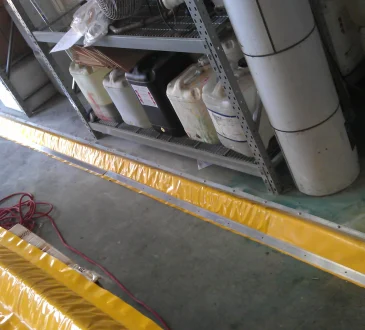
Introduction
Accepting the power of the cloud has become irresistible to succeed in today’s digital age, especially when organizations are progressively migrating their applications to the cloud to drive growth under the Cloud migration strategy.
Cloud migration is a complicated and costly affair. Despite heavy spending on the cloud, one in every three organizations fail to realize its benefits under a digital transformation agency.
33% of businesses have seen no or slight enhancement in organizational effectiveness after cloud adoption. So how do you have to avoid a cloud project breakdown?
The answer reclines in proper planning and selecting the right cloud migration perspective for our IT assets under a digital transformation agency. This article aims to understand better a suitable cloud migration strategy to help us create a path for migration and smoothly transition to the cloud under the Cloud migration strategy.
VoxturrLabs
We recognize the stability of client information and trying to keep up with information data protection, regulations, and compliance. Our team works to provide tech solutions that are detailed to the needs of the user.
The 6 R’s of cloud migration strategy
Rehost
- Say we want to move our on-premises Oracle database to an EC2 instance in AW3S with little upfront effort. Then rehosting is for us!
- Here’s how it works-this “lift and shift” pattern transfers data assets from on-premises infrastructure to cloud infrastructure, specially adapted for large-scale migrations under a digital transformation agency.
- Still, we could also go for manual implementation to gain cloud maturity under the Cloud migration strategy.
- Despite these numerous benefits, we may not be able to avail features like ephemeral computing and autoscaling fully.
Replatform
This ‘lift, tinker, and shift’ technique is a modified version of rehosting. Replatform enables us to make a few composition changes to the apps to better cause the cloud environment without substituting their core architecture under the Cloud migration strategy.
Refactor/ re-architect
- Refactor or Re-architect method involves rewriting our applications from scratch to make them cloud-native. This strategy allows us to realize the full potential of cloud-native techniques like microservices construction, serverless containers, function-as-a-service, and load performers under the Cloud migration strategy.
- For example, we can refactor assets when we move our digital assets from an on-premise inflexible architecture to a fully serverless architecture in the cloud under a digital transformation agency.
- This method is the most costly, resource-exhaustive, and time-consuming equivalent to the others but will prove most notable in the long run under a digital transformation agency.
- Some other challenges we might face include the lack of cloud skills, complex projects, program delivery, or potentially significant business disruption under the Cloud migration strategy.
Redeem
- Redeem, also known as the “drop and shop” technique, replaces the on-premise application with cloud-native vendor-packaged software under the Cloud migration strategy. It typically means moving to a SaaS application with the same capabilities.
- Effectively, it entails a licensing change sometimes – we drop the current on-premise license and begin a new license agreement with the cloud provider for their solution under a digital transformation agency.
- The more recent, developed cloud version offers us a better value with higher efficiency and savings on app storage and maintenance costs under the Cloud migration strategy.
- Some difficulty we might face with repurchasing is training our staff for the new software or vendor lock-in. We might feel the pinch of losing a highly-tailored on-premise custom solution.
Retire
In the ‘retire’ strategy, we eliminate applications that are no longer needed or productive for our IT folder. If an application is not worth migrating to the cloud, it can either be destroyed or reduced under the Cloud migration strategy.
It allows us to explore all our applications regarding their uses, dependencies, and cost to the company under a digital transformation agency. It is a rather strategy as there is no migration.
Though it sounds easy, decommissioning apps is complex and critical to deciding which apps to retire. It is done in the initial planning stages to migrate pivotal applications or systems, decrease the scope of applications to migrate, and save resources under the Cloud migration strategy.
Retain
- Retaining, also referred to as revisit, is revisiting some critical applications/portions of our digital assets that need significant refactoring before migrating them to the cloud under a digital transformation agency.
- Eventually, we may consider some applications are more fit for on-premise adaptations or have been recently developed and need to be kept under the Cloud migration strategy.
- Organizations often use Retaining in hybrid cloud deployment to ensure business continuity during large-scale migrations that take several years under the Cloud migration strategy.
Conclusion
Cloud migration is an arduous journey, but it doesn’t have to be with the proper knowledge and administration. These strategies aren’t definitive but surefire ways to start migration planning.
The selection of perspectives also depends on which migration model we choose or have in place for our organization, for example, IaaS, SaaS, or PaaS under the Cloud migration strategy.
Our migration plan can be a mixture of some strategies or include all of them, as there’s no one-size-fits-all approach under a digital transformation agency.




